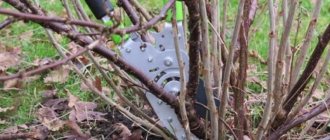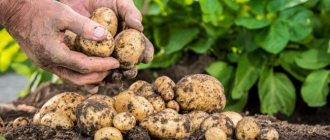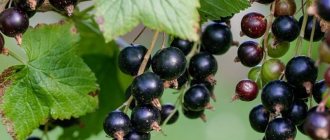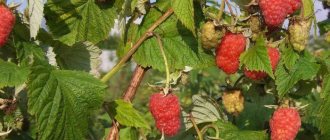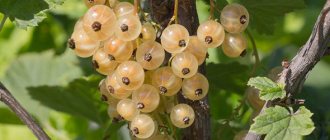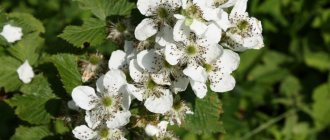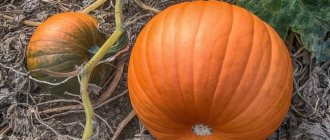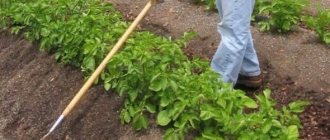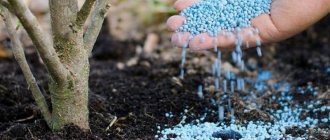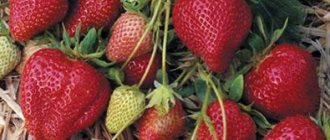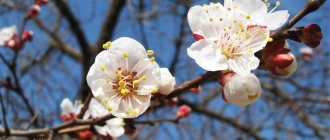Soil is the main environment and a prerequisite for the development and growth of any plant. If its qualitative, mechanical composition, and the amount of nutrients present in it do not correspond to the biological needs of the crop planted in it, this may cause its poor growth or even death. Currants are a berry plant that requires a large amount of nutritious organic substances, so rich in microbiological composition, fertile soils are suitable for its cultivation.
Requirements
Before planting, it is important to take into account the basic requirements for the soil, so we will analyze each in detail.
Acidity
Depending on the type and structure of the root system, soil acidity requirements may differ.
Black currants will not be able to develop and bear fruit normally in acidic, carbonate soils or in saline soils. Such conditions of strong acidity cause the development and damage of bushes by fungal diseases, and on salt marshes plants are affected by chlorosis. The best option for black currants is turf soil with a slightly acidic reaction, no higher than pH 6.5. For red or white selection, optimal conditions for development are created by light soils with a normal level of acidity and a large nutrient layer. Sand and clay - such soils are not suitable for planting - in this case you will have to add a layer of humus, and some sand will need to be added to clay soil.
Humidity
Currants are moisture-loving plants; for normal growth, it is necessary to maintain moist soil between the rows and under the bushes.
A drip irrigation system is not suitable for watering black currants; this crop requires the creation of a normal level of air humidity, especially during dry periods. In the south, with insufficient moisture, the vegetative cycle slows down and yields drop. But currant bushes cannot tolerate wet soil. This leads to the appearance of gray root rot, the roots are washed out, and the bush may die. In areas with high levels of humidity, when planting, the bottom of the hole is covered with expanded clay or broken brick, layer thickness from 150 mm. Raise the height of the bed by filling it with prepared nutrient soil with organic matter and mineral fertilizers.
Care and treatment
How to care for the soil during the season?
Autumn. In order for the bush to bear fruit well, you should carefully care for the soil after planting. The plant especially needs attention in the fall. The first thing to do is prune. After unnecessary branches are removed from the bush, attention should be paid to the root part.
Soil care is not difficult, but important. It is necessary to collect all the leaves, twigs, and berries from the surface of the soil. Then dig up the soil to a shallow depth. When carrying out this procedure, you should be extremely careful not to damage the root system. Thanks to this, the air permeability of the earth increases and water exchange is normalized.
Advice! The soil should be dug to a depth of 7-8 cm.
After the top layer is loosened, it must be watered. To do this, it is best to use the moisture-charging method. It contributes to good enrichment of the soil with moisture. This method also helps slow down the freezing of the ground around the root system. Water-recharging watering saturates the plant with the necessary amount of moisture, which is required in case of a rainless spring.
Spring . Caring for the root zone should begin with the removal of rotten leaves, which contain a large number of pathogens of various diseases. After removing debris, the top layer of soil should be loosened using a rake. It is better to use a hoe to remove weeds. If the soil is very compacted, then it is worth weeding to a depth of 20 cm.
In order to increase the yield of bushes, in the spring they should be watered once a week. Up to three liters of liquid should be used per procedure. Excess moisture can lead to rotting of the root system. Irrigation should be carried out only with well-settled water, the temperature of which will not be lower than 200C.
Summer . During the warm season, it is important to keep the soil around the bush clean. Weeds should be removed and the soil fed in a timely manner. For fertilizer, it is best to use organic types of products, combining them with watering.
Type of soil that currants love
Gooseberries and currants - these shrubs are demanding on the composition and structure of the soil. It is preferable to plant on any type of light soil with a normal nutrient layer. It can be loams, black soil. Another feature and prerequisite is a reduced or normal level of acidity. Reaction indicators below pH 5.5 - such soil must undergo additional liming. Read about planting currants in open ground in spring in this article.
For planting, it is better to choose flat areas; a slight slope is allowed.
Plants do not grow well in a bed with drafts or constantly blowing winds. Here you will have to provide the plants with a natural or shield windbreak. When planting on a slope, red currants are planted closer to the top, and black or gooseberries are planted in the center of the slope or closer to its bottom.
Features of different varieties
Plants have different structures of the root system and the entire bush, so the soil requirements are slightly different. Find out what to plant next to currants at this link.
Black
Shrubs have an extensive root system close to the soil surface. Therefore, it is recommended to equip the beds in an area with low soil moisture. Plants can easily tolerate high groundwater, but will react negatively to lack of moisture. Shrubs do not tolerate planting in the shade; it is permissible to plant beds in partial shade with diffuse sunlight.
This condition, partial shade, is especially important when planting in southern regions with their dry climate and high temperatures.
The plant needs to be provided with normal conditions for humidity and nutrient saturation at the fruiting stage. The berry grows large and juicy.
Red
This type of currant has an elongated root system. It is buried in the ground, so when planting in places with high groundwater flow, it is planted closer to the top of the slope or on a high bed. The shrub tolerates sunlight freely, so the best option is to plant it in an open place. Soil requirements: medium acidic, light soil with a sufficient nutrient layer. This material will tell you how to feed red currants.
Plants bear fruit better when planted on soil with a high potassium content; the normal level of this substance is 31 g per 1 m2.
Features of different varieties
There are several types of currants that differ from each other not only in external characteristics, but also in the place for growing.
Types of currants and their features:
Red
This variety is characterized by an elongated root system. Such seedlings should be planted in holes at least 60 cm deep. Red currants do not grow well in shaded areas. When choosing a territory, you should also take into account the composition of the soil. The plant will not produce a good harvest on acidic and dense soils. Swampy areas should be avoided.
The optimal place for red currants is soil whose acidity is within 5.5 pH. This variety also prefers substrates with a high percentage of potassium. The amount of microelement per square meter should be about 31 grams.
Black
This variety has a shallow root system. The plant should be planted in areas with low humidity. Dry areas can harm the bush. It is forbidden to grow black currants in the shade. With insufficient light, the plant suffers from fungi and ages prematurely.
Advice! You should not plant red currants next to gooseberries.
The peculiarity of black currant is that it can tolerate moisture deficiency in the soil well. In order for the bush to produce a large harvest, it is worth maintaining average soil moisture during bud formation. It is during this period that the plant needs the most water.
What fertilizers to use
Each type of mineral fertilizer has its own application time. Let us analyze in detail the period of introducing complementary foods and the symptoms signaling a lack of nutrition.
Nitrogen
This mineral composition is important for the growth of green mass of shrubs. This is due to the high protein content necessary to ensure plant development. Protein is part of chlorophyll, the solution of which nourishes all parts of the bush.
The growth of branches and the development and preparation of buds for flowering depend on this element. Therefore, the time to use nitrogen is spring.
Signs of malnutrition:
- the growth of annual shoots slows down, the foliage grows small;
- in case of severe nitrogen starvation, early leaf fall may begin and the plant, not receiving enough chlorophyll nutrition, will not be able to prepare for winter and will die;
- the berries become smaller and begin to crumble;
- an excess reduces the plant's resistance to fungal attack.
Additional feeding with nitrogen-containing fertilizers will be necessary when growing currants on sandy soils.
Fertilizing is done in early spring, before buds begin to bloom. Loose soil is raked away from the bush and a mound of soil is poured to the size of the crown. Depth of embedding granules up to 100 mm. Ammonium nitrate is evenly scattered over the surface of the bed at the rate of 40 g per 1 m2 and the bushes are watered with 20-30 liters of warm water. After watering, the ground is leveled and covered with a layer of mulch. Read about potato peelings for currants here.
Potash
The time to use this fertilizer, which is important for the plant, is throughout the summer and autumn. Potassium compounds promote the ripening of the coating of shoots and berries. Plants tolerate frost and drought better, and the level of resistance to disease increases. The best option for this type is to add sifted wood ash to the composition at the rate of 200-300 g per 1 m2. It is not recommended to use formulations containing chlorine - such fertilizing causes burns to shrubs.
It is allowed to use potassium chloride only when feeding in the pre-winter period; the chlorine will be absorbed into the soil and will become harmless to plants.
Insufficient potassium content leads to:
- the foliage begins to change color to a lighter color;
- dark red stripes appear on the edges of the leaves;
- the foliage dries out completely, but remains hanging on the bush;
- fruit buds do not develop, small berries grow from them;
- annual growths become thinner and do not grow to normal length.
Let us present the indicators of exchangeable potassium in the soil based on the mineral content in 100 g of soil. Gardeners will not be able to determine it on their own, but it will be useful for a general concept. For all types of berries, the following values are accepted:
- at low levels – up to 15 g;
- on average - up to 20 g;
- high – more than 20 g.
Phosphorus
This type of fertilizing affects the development of the root system of currant bushes and allows the roots to grow quickly. This affects the growth of branches and young shoots and increases yield. Phosphorus is added to ready-made complex fertilizers rich in enzymes and multivitamins.
Signs of phosphorus deficiency in the soil:
- the foliage changes color to purple or even violet;
- the plant slows down in development, this is most noticeable during flowering and fruiting of the bushes;
- on acidic soils in a solution for currant bushes, phosphates are the main mineral fertilizer;
- Phosphorus is absorbed primarily by the root system, so adding it to the solution for foliar feeding does not make sense.
For all types of horticultural crops, the following limit values for the degree of phosphorus supply of the soil are accepted:
- low – up to 20 mg per 100 g of soil;
- average – up to 25 mg;
- high – over 25 mg.
It is recommended to apply fertilizer mixtures in different ways, depending on the composition of the soil. On poor soils, fertilizing during planting is applied directly into the planting hole. On loams or other soils with a fertile layer, it is enough to fertilize the top part of the soil throughout the entire area.
Calcium and trace elements
A lack of microelements, in particular iron, causes discoloration of most of the foliage of the bush or the color becomes pale yellow. Excess lime or uneven watering can cause similar symptoms - this is due to the effect of the toxic substance on the plants. Subsequently, the adult branches with young growths dry out.
Oversaturation of the soil with calcium and magnesium causes similar consequences as with an excess of potassium - the leaves begin to turn whitish, further along the edge of the foliage a brown border forms and the leaf blades begin to die.
Simple wood ash will provide plants with a supply of not only potassium, it also contains a high content of calcium and useful microelements.
When the winter cover is lifted
There is no point in delaying the opening of berry bushes. At the end of the calendar winter and the beginning of spring, evaporation and a greenhouse effect are formed under the shelter, which contributes to the rotting of the buds. You can avoid the death of fruiting branches if you remove the protection after the snow melts.
If the currants overwintered under installed frames, they must be left. Frames will be needed in sunny early spring, which threatens the plant with thermal burns.
Covering currants with a thin, light-colored covering material that reflects the hot rays of the sun will save currants from damage by the sun's rays. When the average daily temperature reaches +8, and the changes are no longer so sharp, the shelter can be removed.
In regions with a predominance of gusty winds, it is imperative to secure the covering material to the frames by tying it down. To do this, pegs are cut and installed in the form of a pyramid, or high branches are installed in the shape of a cone. The design will not only protect you from the sun’s rays, but will also protect you from gusty winds.
Preparation
For preventive purposes, simple operations are used that provide normal conditions for plants to grow and develop.
Weed control
This operation will protect plants from pests and fungal diseases. By removing weeds and root shoots, the gardener ensures normal ventilation of the soil under the bush and does not allow weeds to suck out the nutrients needed for currants from the soil. Read here how to feed blackcurrants in spring.
Digging and digging
This work will destroy wintering insects and fungal spores, and will also facilitate access of nutrients directly to the root system.
Digging of bushes is carried out by applying fertilizers combined with watering. Having evenly distributed the mineral and organic substances over the surface of the hole, fill it with 2-3 buckets of water. The sides prevent moisture and fertilizing from spreading beyond the tree trunk area. After soaking in water, the rollers are leveled. Now the granules will gradually dissolve, feeding the currant bushes.
Preparing for frost
Modern varieties of currants need preparation for winter only in 3 cases:
- The plants will need to be covered with covering material after the first year of growth. This is especially true for shrubs planted in the spring - they do not have time to properly prepare for winter and may die;
- Shrubs that have been ill or have been severely damaged by pests, especially if they have lost their leaves early, require protection from frost;
- In snowless winters, before the onset of severe frosts, plants are covered with material or film.
Mulching
This operation preserves moisture and prevents the soil from becoming cracked, which could damage the nearby root system. A layer of peat or non-woven base prevents the growth of weeds, protects the roots from overheating in hot weather, and from frost in winter. A sufficient layer of deciduous tree bark, scattered over the entire surface of the bed, will not only decorate the garden. Mulching will allow nutrition to quickly reach the root system and will affect the growth of shoots and the yield level of shrubs.
How to protect currants from frost in spring
Since currants are afraid of spring frosts, they need to be protected. There are several ways you can do this.
Foliar and root feeding
A day before the onset of frost, the currants need to be sprayed with phosphorus-potassium fertilizers, and 10 hours before the temperature drops below 0°C, you can also water the plant with this mixture: it will not only be less exposed to low temperatures, but will also give a good harvest . The composition is prepared as follows: 50 g of double superphosphate should be poured into 1 liter of hot water and left for 3-4 hours, then strained and diluted in 10 liters of water. Add 20 g of potassium nitrate to the resulting solution.
It is recommended to carry out root feeding of plants along with watering - otherwise the applied fertilizers may cause burns to the roots.
How to feed currants and gooseberries in the fall We will tell you how you can feed berry bushes in the rainiest time of the year.
Evening watering
Evening watering of currants at the root reduces the harmful effects of night cold in spring. When the air temperature begins to fall, moisture will evaporate and warm the air. Thus, it will prevent frost from reaching the ground.
Sprinkling
Note that this method is completely ineffective in windy weather and at air temperatures below 0°C.
Gardeners recommend irrigating plants late at night, several hours before frost sets in.
Sprinkling is carried out using a stationary irrigation system with sprinklers or a regular hose with a fine spray. Spraying plants in this way gives the same effect as watering at the root.
Smoke
This method allows you to increase the air temperature by 2–3°C, but it is more suitable for protecting trees, although it can be used as an additional aid for shrubs. The disadvantage of this method is that in windy weather the smoke can spread to neighboring areas.
You need to start a fire when the air temperature drops to 0°C. In order for the smoke to last all night, you need to choose material that is not too dry - firewood, dry tree branches, straw, leaves, and also not too dry grass.
In order for the fire to smolder until the morning, it must be voluminous (about 1.5 m wide and at least 0.5 m high).
There should be several fires. They are planted on the leeward side of the site at the rate of one per hundred square meters. To increase the density of the smoke and the smoldering time of the fire, waste that is too dry must be sprayed with water. All fires lit on the site must be checked several times a night.
Covering material
The most popular and effective method of combating frost. The covering material should be transparent, but it should not touch the leaves. It is best to install a mini-greenhouse or greenhouse. You can also build a cap from several wire arches, evenly installed around the currant bush and covered with film. It is better to place very small currant bushes under cut plastic bottles.
However, in winter it is not customary to cover currants with anything, since this plant is considered resistant to low temperatures, unless this concerns the flowering period.
Caring for currants in the spring - how to properly prune, feed and treat the bushes To get a decent currant harvest, you need to carry out several important works now.
How do you protect currants from frost? Share your experience!
Landing
The seedlings must be planted in carefully dug and loosened soil. The place should be well lit and protected from cold wind. Being in partial shade can reduce crop yields.
Interesting. It is desirable that the soil on the site be light or sandy loam.
To plant seedlings, a hole for currants must be prepared in advance. It is best when the depth is 40 centimeters, and the length and width are 60 centimeters.
It is believed that it will be more effective if, when planting, currant seedlings are located obliquely, at an angle of 45 to 60 degrees. Usually this operation is performed by two people. In this case, one person places the sprout in the desired position, and the other pours in the soil. This method of planting leads to particularly intensive growth of the root system.
When digging holes, the fertile layer is placed on one side, the rest of the soil on the other. We'll tell you what to put in the hole when planting currants. When planting, the roots are carefully laid out on the ground and covered three-quarters with fertile soil mixed with fertilizers. The remaining part is covered with the rest of the earth.
Planting material must be buried into the soil by about eight centimeters. Bushes are planted in beds at a certain distance. It depends on the plant variety. There are more spreading or compact currant varieties.
When planting in autumn, fertilizers are placed fourteen days before planting. During this period, the earth is gradually laid down and has time to settle.
Each plant must be watered at this time. To do this, you can spend half a bucket of water on each sprout. A small ditch is made around the bed for water. Plants are mulched with humus to prevent the formation of crust on the ground.
Is it necessary to dig up currants in the spring? Yes, this will create conditions for more efficient development of the root system.
